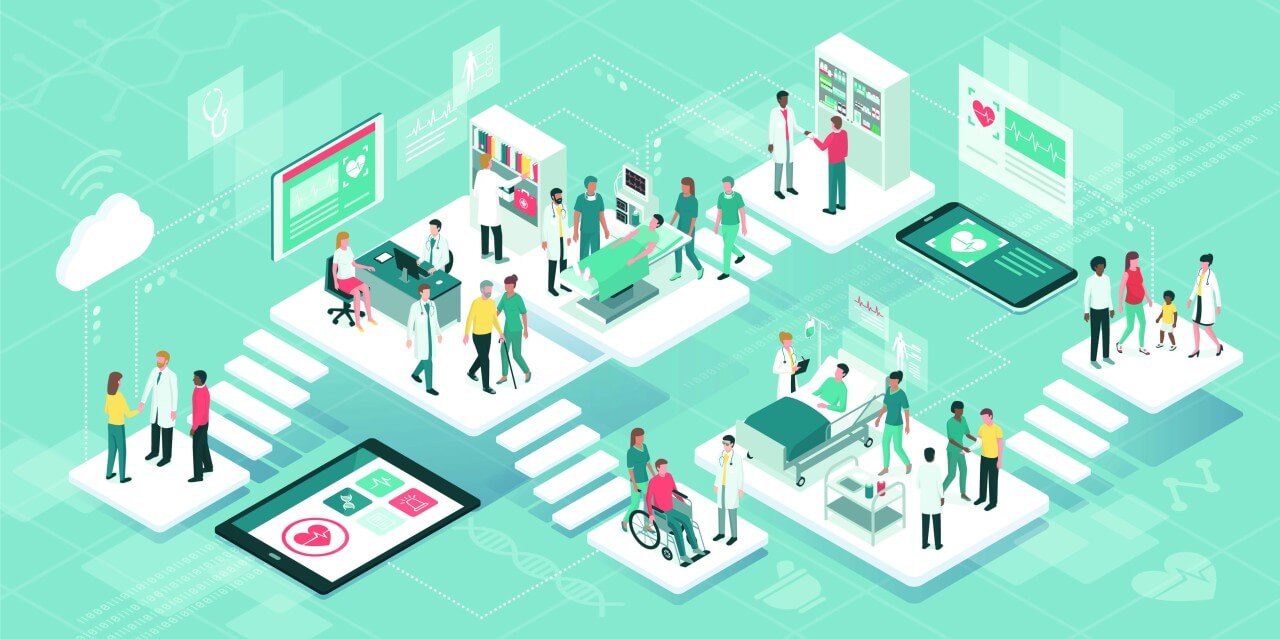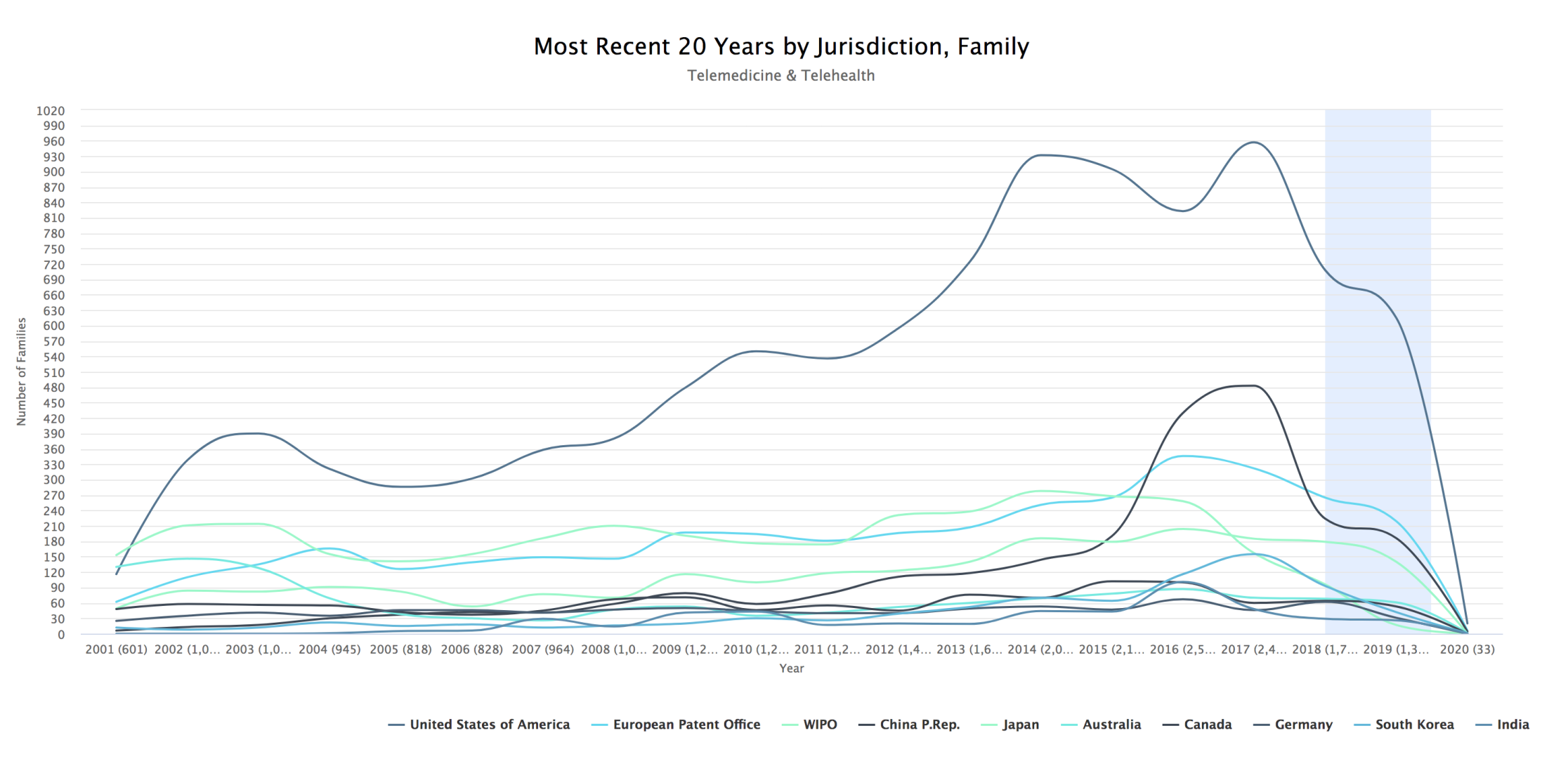Smart homes & telemedicine: the future of healthcare?
The rapid growth of the aged population has caused an immense increase in the need for personal care, particularly for people with chronic conditions such as dementia or diabetes. According to the World Intellectual Property Organization’s (WIPO) Innovation Index 2019, the number of people living with diabetes has risen from 108 million in 1980 to 422 million in 2014 and is rising even more rapidly now in low to middle income countries.
As a result of the increase in chronic diseases, care costs are continuing to rise, putting healthcare systems under financial pressure. A relatively efficient solution to reduce these costs would be to shift the emphasis from formal care in hospitals and care homes to informal care in private homes, this could potentially improve quality of life for patients. The Innovation Index highlights quality of life as being the most important benefit citizens expect from healthcare technology breakthroughs: it was acknowledged as top 1 priority for 29% of respondents and top 3 for 62% of respondents. Prevention is among the top-ranking expectations as well, identified as top 3 priority for 56% of respondents. Preventive health plans are perceived as having the highest direct impact on people’s health. Patients also expect higher autonomy through better information and the ability to dispense treatments at home.
Smart Home (SH) technology aims to support people to have a better quality of life and to ensure elderly people and people living with chronic diseases or disabilities can live comfortably and independently. The Internet of Experiences (IoE) connects experiences worldwide, making them accessible everywhere and anytime. This will enable a shift to remote care and monitoring, leading to more proactive therapeutic solutions with personalised recommendations. An SH network can include services that track vital signs, sleep quality, and other health parameters via wearables, sensors, and devices – or telehealth. The IoE will reshape the care delivery experience through ambulatory care, telehealth, wearable devices that monitor vital signs, at-home drug delivery devices reducing in-hospital treatments, and a wide panel of online services around prevention and behaviour change. Citizens will increasingly be empowered to monitor and manage their own health, reaching a new level of autonomy and harmony in their relationship with their own body.
Using the CPC codes, G06519/34 (computer-assisted medical diagnosis or treatment, e.g. computerised prescription or delivery of medication or diets, computerised local control of medical devices, medical expert systems or telemedicine) and G06519/3418 (telemedicine, e.g. remote diagnosis, remote control of instruments or remote monitoring of patient carried devices) an analysis was run in PatBase Analytics V2 to get an idea of the patenting trends for this technology area.
The US is clearly leading the way in this technology area, significantly surpassing the other countries from 2001 and onwards. According to the WIPO’s Innovation Index, healthcare spending in the US is nearly double the amount of the next top region (Western Europe) so it’s not surprising to see them featuring prominently here.
In 2015-16, China had a surge in innovation in this area, however, it’s important to note that state sponsorship has undoubtedly been a catalyst behind the rapid increase in Chinese patents – across the board. Between 2007 and 2017, the number of patent applications filed in China rose from 204,000 to 1.3 million, an increase of 600 per cent! Intellectual property is a major component of China’s industrial strategy, with companies qualifying for government subsidies after filing a patent application.
India is the only lower middle-income economy featuring in the top 10 assignees. The rest are all high-income, except for China which is labelled as upper middle-income (labels applied by WIPO). However, Indian healthcare has made substantial progress, especially in the last decade. The Government of India has been trying to improve public health delivery through significant investments in the healthcare infrastructure. In addition, with limited resources and a large population to take care of, India requires innovative ways to provide quality healthcare facilities for all. Therefore, investment in this technology area is a viable option for the government.
For all jurisdictions, there is an 18-month lag period before publication, hence why there is a dip between 2018 and 2020 in the graph.
In the top 20 assignees there are several healthcare technology providers. Abbott Diabetes Care, for instance, specialises equipment to help patients manage their diabetes from home. Health Hero Network offers technology-based solutions for remote health monitoring and management. Medtronic develop all sorts of equipment for the healthcare industry but are also developing “Medtronic Care Management Services” to focus care on at-risk patients using remote patient monitoring solutions; reducing the cost of care and improving quality of life for patients with complex, chronic or co-morbid conditions.
Also featuring in the top 20 assignees are a few house-hold name technology companies, such as Philips, Samsung and IBM, to name a few. This patent from Samsung is an apparatus which has various functionalities to help with health care as well as the physical or mental relaxation of the patient. For instance, it’s able to notify that the patient has had a heart attack and let the patient connect the personally customised bed to a healthcare system through the wireless network, allowing patients to have a real-time online consultation from an expert, when needed.
At first glance, it might seem odd to spot FedEx included in the top 20, however, the organization have done a lot of work on developing healthcare network supply chain solutions reliant on the Internet of Things.
Investment is best monitored by actual legal expenditure, which can be tracked by a company’s patent applications and the maintenance fees they are paying to keep a monopoly of a specific invention. Taking this into consideration, it seems that companies are investing in this technology area and we can expect to see it continue to grow. The home is likely to become a valuable site for enhancing the healthcare experience as a culmination of digital, remote, connected and virtual care. Health systems are evolving beyond care delivery of the diseased to encompass numerous health and wellness touchpoints, transforming it from disease management to health management.
Patent information contains valuable insights and information that can assist companies in identifying new/emerging markets, give insights into the actions of competitors and partners and inform the company which parts of their portfolio are most valuable. In just a few minutes, PatBase and integrated PatBase Analytics V3 can be used to identify key players in the space for licensing agreements or locate expired IP that is open for use. Whether you have a practical problem to solve, valuable IP you wish to keep track of or competitors to monitor, Minesoft’s solutions have you covered.




